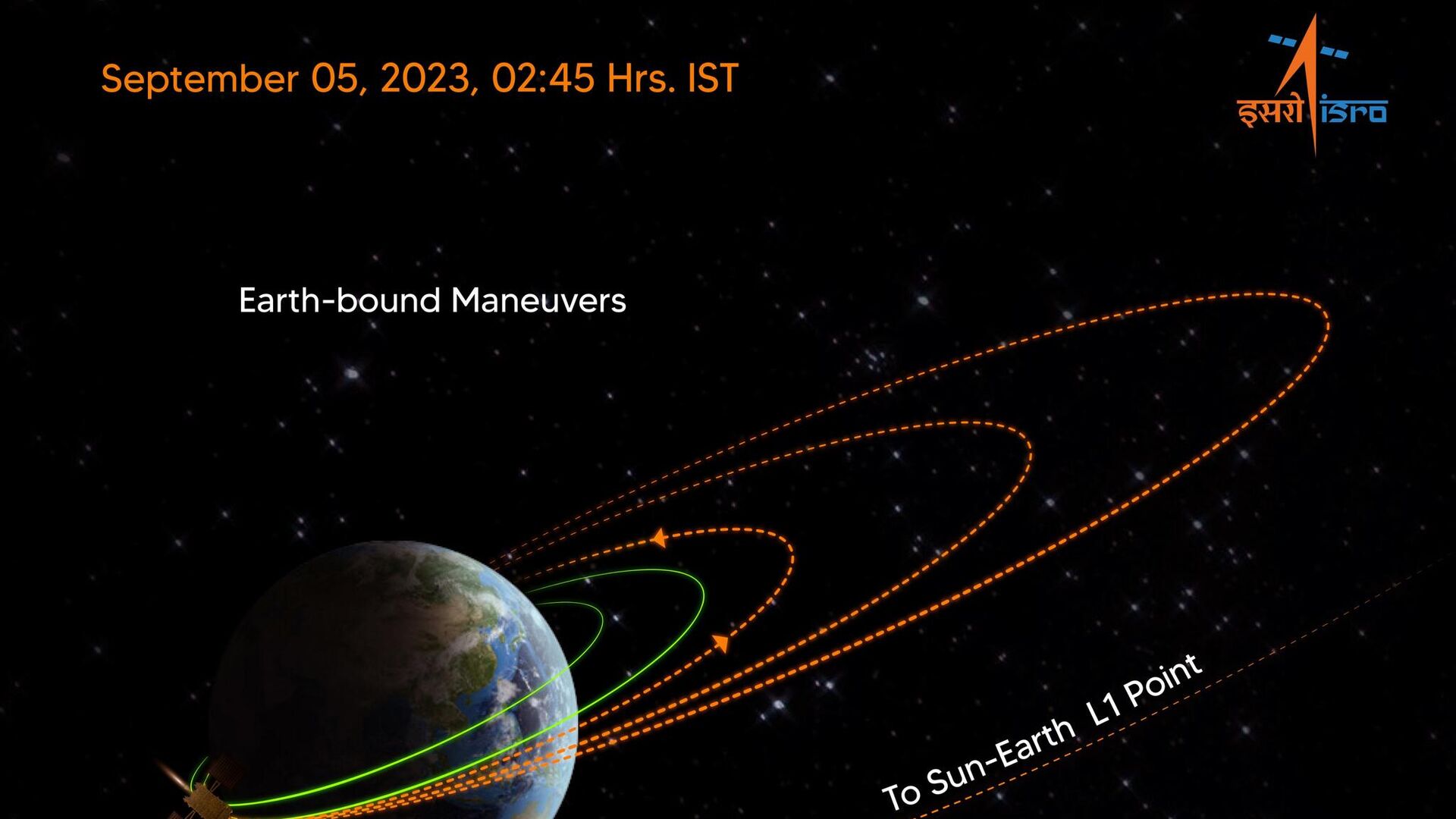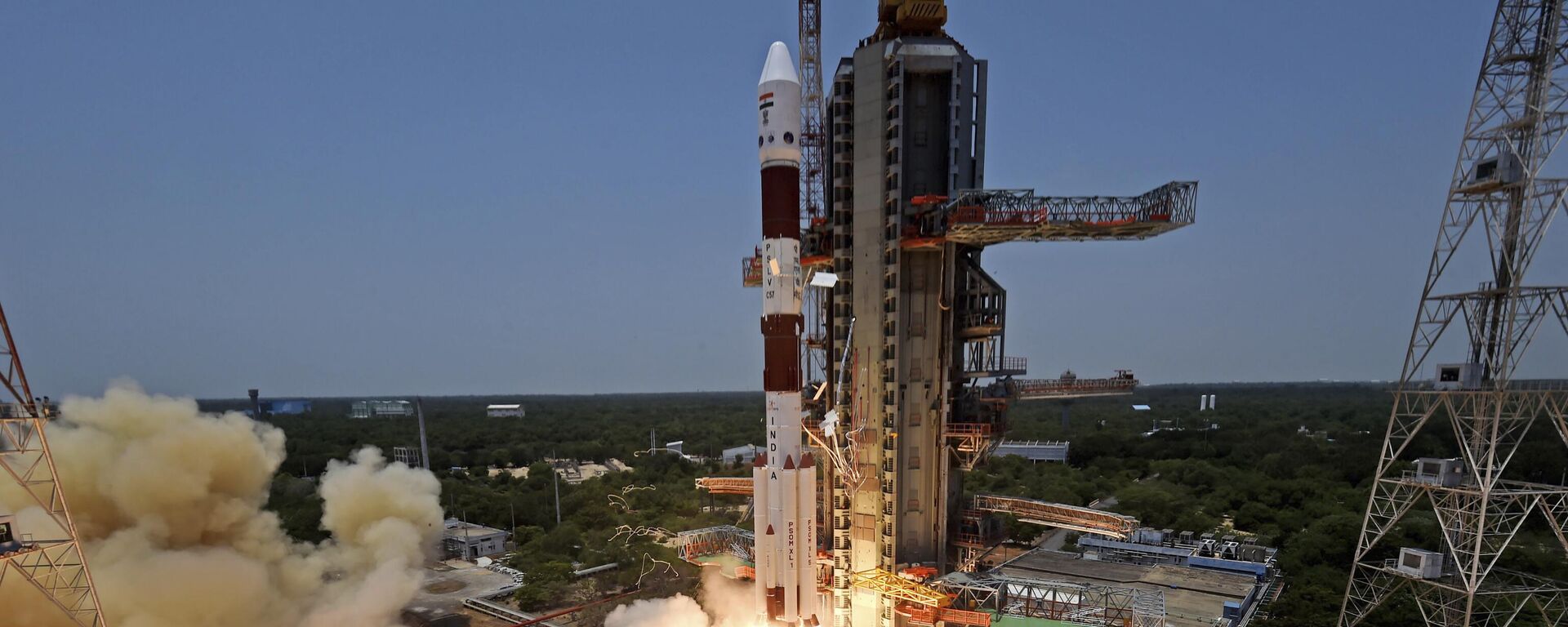https://sputniknews.in/20230905/indias-aditya-l1-solar-mission-executes-its-second-earth-bound-manoeuvre-4041261.html
India’s Aditya-L1 Solar Mission Executes Its Second Earth-bound Manoeuvre
India’s Aditya-L1 Solar Mission Executes Its Second Earth-bound Manoeuvre
Sputnik India
India’s Aditya-L1 Solar Mission has successfully performed its second earth-bound manoeuvre from the ISRO Telemetry, Tracking and Command Network (ISTRAC), the Indian space agency said in a statement.
2023-09-05T12:23+0530
2023-09-05T12:23+0530
2023-09-05T13:35+0530
science & tech
science & tech
india
bengaluru
indian space research organisation (isro)
space satellite
chandrayaan
karnataka
space industry
space exploration
https://cdn1.img.sputniknews.in/img/07e7/09/05/4043393_0:81:2048:1233_1920x0_80_0_0_c16a29d8866ff67cf2148d6ecd1d186a.jpg
India’s Aditya-L1 Solar Mission has successfully performed its second earth-bound manoeuvre from the Indian Space and Research Organization Telemetry, Tracking and Command Network (ISTRAC), the Indian space agency said in a statement.The ISRO has said that the first earth-bound manoeuvre was successfully executed on September 3, a day after the mission was launched from the Satish Dhawan Space Center off the coastline of Andhra Pradesh.The next manoeuvre is scheduled for 10 September, it said.After these five manoeuvres, Aditya-L1 will begin its 110-day trajectory to its destination around the L1 Lagrange point.The nominal mission life of Aditya-L1 is estimated to be five years.What’s the Purpose of Aditya-L1 Mission?The strategic placement of the solar satellite is meant to ensure that Aditya-L1 will get an “uninterrupted view” of the Sun, according to ISRO.Further, ISRO has estimated that L1 point’s “gravitational stability” would minimize the “need for frequent orbital maintenance efforts” and optimize the satellite’s operational efficiency.
https://sputniknews.in/20230903/isros-sun-mission-successfully-carries-out-its-first-earth-bound-manoeuvre-4006714.html
india
bengaluru
karnataka
Sputnik India
feedback.hindi@sputniknews.com
+74956456601
MIA „Rossiya Segodnya“
2023
Dhairya Maheshwari
https://cdn1.img.sputniknews.in/img/07e6/0c/13/138962_0:0:641:640_100x100_80_0_0_2cb44360dbcdf6d84bf4b299cd045917.jpg
Dhairya Maheshwari
https://cdn1.img.sputniknews.in/img/07e6/0c/13/138962_0:0:641:640_100x100_80_0_0_2cb44360dbcdf6d84bf4b299cd045917.jpg
News
en_IN
Sputnik India
feedback.hindi@sputniknews.com
+74956456601
MIA „Rossiya Segodnya“
Sputnik India
feedback.hindi@sputniknews.com
+74956456601
MIA „Rossiya Segodnya“
Dhairya Maheshwari
https://cdn1.img.sputniknews.in/img/07e6/0c/13/138962_0:0:641:640_100x100_80_0_0_2cb44360dbcdf6d84bf4b299cd045917.jpg
aditya l1 mission, aditya l1 launch, aditya l1 launch date, indian's sun mission, aditya l1 news, aditya l1 latest update, earth sun distance, space news, isro news, isro
aditya l1 mission, aditya l1 launch, aditya l1 launch date, indian's sun mission, aditya l1 news, aditya l1 latest update, earth sun distance, space news, isro news, isro
India’s Aditya-L1 Solar Mission Executes Its Second Earth-bound Manoeuvre
12:23 05.09.2023 (Updated: 13:35 05.09.2023) Launched on September 2, India’s first-ever solar mission Aditya-L1 seeks to place a solar satellite in the Sun’s L1 orbit, which is nearly 1.5 million square km from the Earth.
India’s Aditya-L1 Solar Mission has successfully performed its second earth-bound manoeuvre from the Indian Space and Research Organization Telemetry, Tracking and Command Network (ISTRAC), the Indian space agency said in a statement.
“ISTRAC/ISRO's ground stations at Mauritius, Bengaluru and Port Blair tracked the satellite during this operation. The new orbit attained is 282 km x 40225 km,” it said.
The ISTRAC is responsible for providing major tracking support to satellites and launch vehicles, carrying out mission operations as well as providing other forms of operational support, according to ISRO.
The ISRO has said that the first earth-bound manoeuvre was successfully executed on September 3, a day after the
mission was launched from the Satish Dhawan Space Center off the coastline of Andhra Pradesh.
The next manoeuvre is scheduled for 10 September, it said.
The ISRO has noted that the mission would stay in Earth’s orbits for 16 days, during which it will undergo five manoeuvres to gain necessary velocity for its onward journey near the Sun.
After these five manoeuvres, Aditya-L1 will begin its 110-day trajectory to its destination around the L1 Lagrange point.
“Upon arrival at the L1 point, another manoeuvre would put Aditya-L1 to an orbit around L1, a balanced gravitational location between the Earth and the Sun,” the space agency explained.
The nominal mission life of Aditya-L1 is estimated to be five years.
What’s the Purpose of Aditya-L1 Mission?
The Aditya-L1 Mission is carrying seven payloads in order to observe the photosphere, chromosphere and Corona, the outermost layer of the Sun, in different wavebands.
The strategic placement of the
solar satellite is meant to ensure that Aditya-L1 will get an “uninterrupted view” of the Sun, according to ISRO.
“This location also allows the satellite to access solar radiation and magnetic storms before they are influenced by Earth's magnetic field and atmosphere,” ISRO explained.
Further, ISRO has estimated that L1 point’s “gravitational stability” would minimize the “need for frequent orbital maintenance efforts” and optimize the satellite’s operational efficiency.



